In this edition:
* ISRO Successfully Launches SSLV-D3, Deploys EOS-08 and SR-0 Demosat
* SpaceX Transporter-11 Launches 116 Satellites, Including OreSat0.5
* Polaris Dawn Set for Historic Launch and First Commercial Spacewalk
* GridMasterMap Satellite Top 100 Rovers September 2024 Rankings
* Changes to AMSAT-NA TLE Distribution for August 23, 2024
* ARISS News
* Upcoming Satellite Operations
* AMSAT Ambassador Activities
* Satellite Shorts From All Over
The AMSAT News Service bulletins are a free, weekly news and information service of AMSAT, the Radio Amateur Satellite Corporation. ANS publishes news related to Amateur Radio in Space including reports on the activities of a worldwide group of Amateur Radio operators who share an active interest in designing, building, launching and communicating through analog and digital Amateur Radio satellites.
The news feed on https://www.amsat.org publishes news of Amateur Radio in Space as soon as our volunteers can post it.
Please send any amateur satellite news or reports to: ans-editor [at] amsat.org
You can sign up for free e-mail delivery of the AMSAT News Service Bulletins via the ANS List; to join this list see: https://mailman.amsat.org/postorius/lists/ans.amsat.org/
ANS-238 AMSAT News Service Weekly Bulletins
To: All RADIO AMATEURS
From: Radio Amateur Satellite Corporation
712 H Street NE, Suite 1653
Washington, DC 20002
DATE 2024 Aug 25
The 42nd Annual AMSAT Space Symposium and Annual General Meeting will be held on Friday through Saturday, October 25-26, 2024
DoubleTree by Hilton Tampa Rocky Point Waterfront in Tampa, Florida. Click Here to Register Now
Rooms can be reserved at https://www.hilton.com/en/attend-my-event/radioamateursatellite/
If you’re interested in presenting or submitting a paper, see the Call for Papers webpage
ISRO Successfully Launches SSLV-D3, Deploys EOS-08 and SR-0 Demosat
The Indian Space Research Organisation (ISRO) successfully launched its third and final developmental flight of the Small Satellite Launch Vehicle (SSLV-D3) on August 16, 2024. The launch, conducted from the Satish Dhawan Space Centre in Sriharikota, India, placed two satellites, EOS-08 and SR-0 Demosat, into orbit, marking the completion of the SSLV’s development phase. This achievement enables the rocket’s operational use by Indian industry and NewSpace India Limited (NSIL).
The primary payload, EOS-08, is an Earth observation satellite developed by ISRO’s U R Rao Satellite Centre. The satellite was placed into a 475-kilometer low Earth orbit about 13 minutes after liftoff. EOS-08 is equipped with three advanced payloads: the Electro Optical Infrared Payload (EOIR), the Global Navigation Satellite System-Reflectometry payload (GNSS-R), and a SiC UV Dosimeter. These instruments will support a variety of Earth and atmospheric monitoring tasks, including disaster management and environmental surveillance. EOS-08 also features several new technologies, including an integrated avionics system and flexible solar panels, which will be demonstrated during its mission.
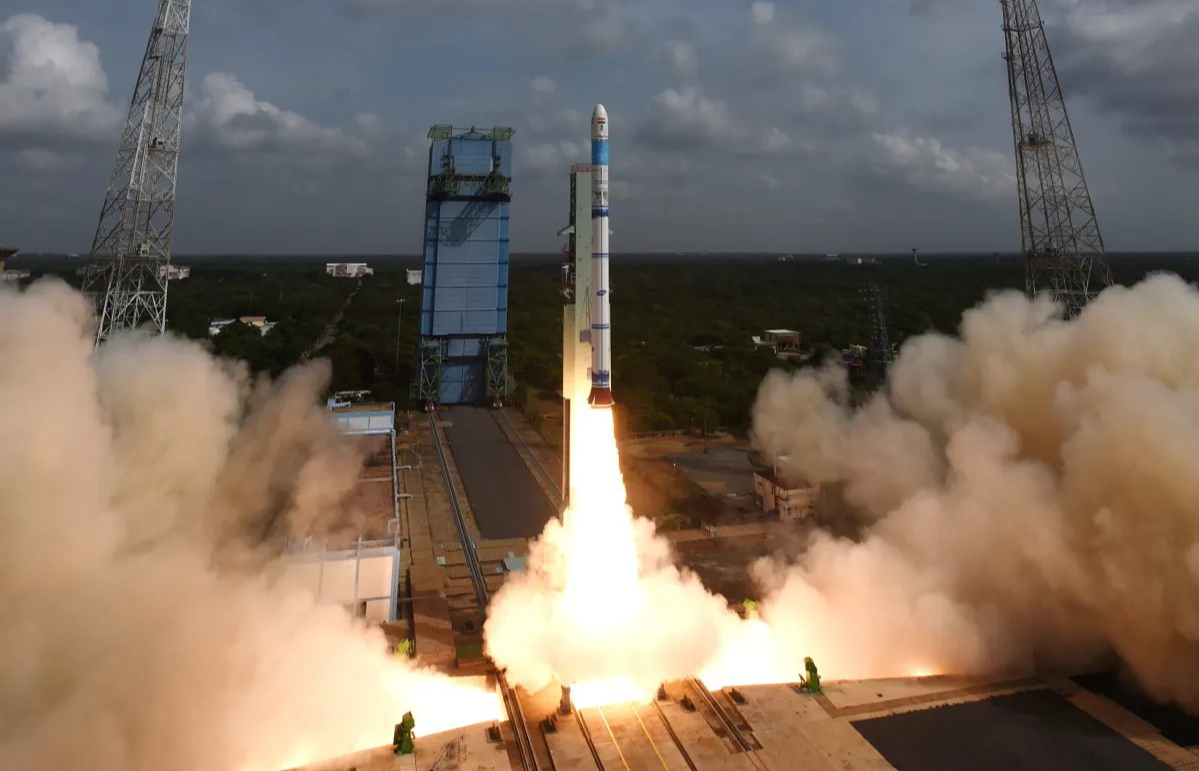
The secondary payload, SR-0 Demosat, developed by Space Kidz India, is a 0.2kg CubeSat designed for educational and amateur radio purposes. Deployed into the same orbit as EOS-08, SR-0 Demosat is equipped with an Inertial Measurement Unit (IMU) and a LoRa digipeater. The satellite’s mission includes raising awareness about amateur radio and nano satellites among students, transmitting health telemetry, and serving as a Digital Packet Store and Forward System for radio amateurs worldwide. Additionally, SR-0 Demosat will act as a demonstration unit to qualify a new CubeSat deployer, reflecting Space Kidz India’s innovative approach to space technology.
Space Kidz India, which developed SR-0 Demosat, has a history of launching educational satellites. The SR-0 Demosat continues this tradition, serving both educational and amateur radio communities. Operating on a 437.400 MHz downlink, the satellite supports various digital communication modes, including 9k6 FSK AX25, 4FSK SSDV, and 38k4 LoRa. This allows radio amateurs globally to engage with the satellite and collect valuable data. SR-0 Demosat’s telemetry dashboard can be found on the SatNOGS website: https://db.satnogs.org/satellite/WZIT-9333-7102-4860-3049.
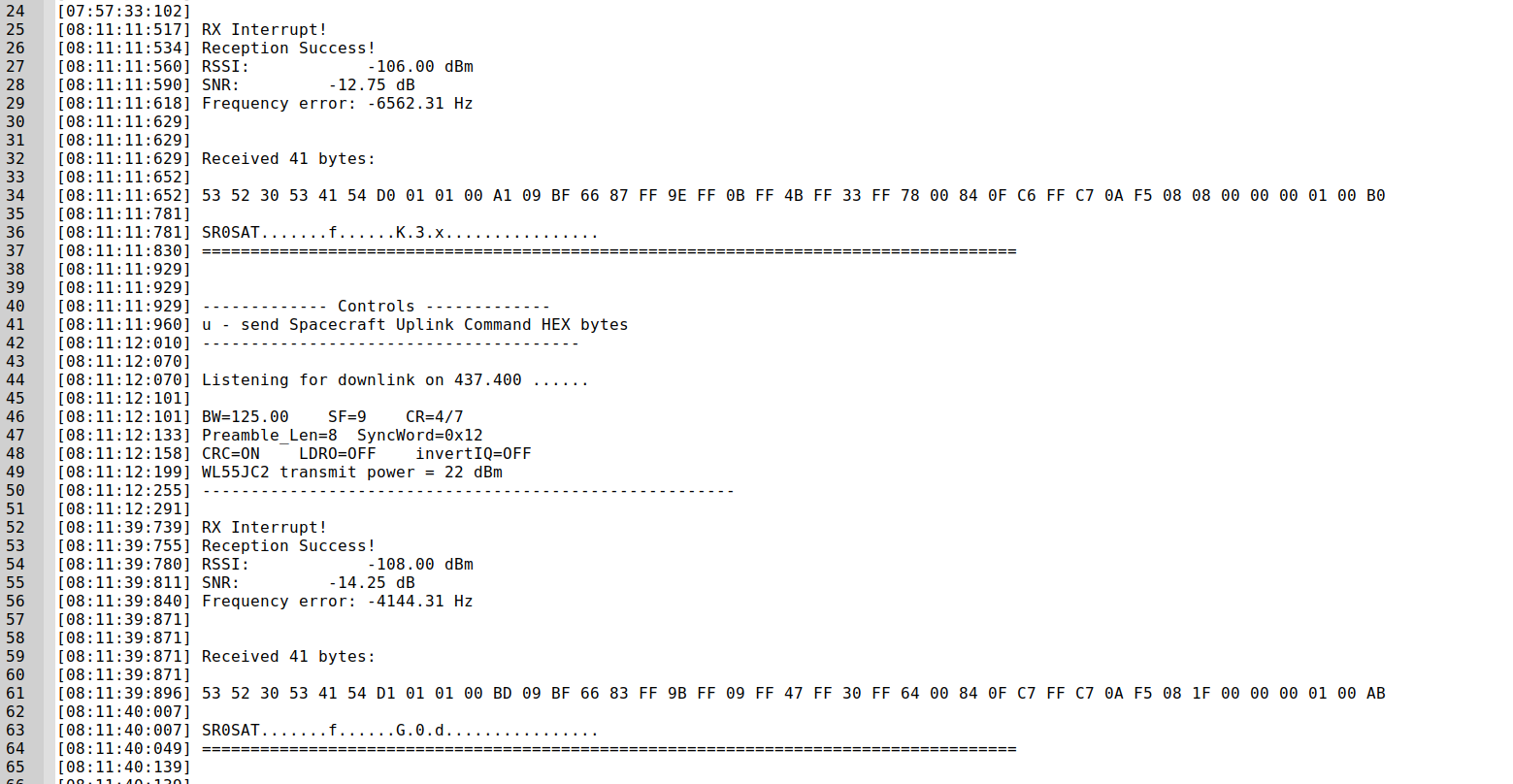
ISRO Chairman S. Somanath highlighted the precise placement of the satellites, noting that the successful deployment of both EOS-08 and SR-0 Demosat underscores the SSLV’s readiness for operational missions. The SSLV, known for its low cost, quick turnaround, and flexibility, is suited for launching mini, micro, and nano satellites, which are increasingly in demand for commercial and educational purposes.
The SSLV-D3 launch represents a key step in India’s space program. With the successful deployment of EOS-08 and SR-0 Demosat, ISRO has demonstrated its capability to deliver a range of payloads into orbit, meeting the growing needs of the global small satellite market. This mission also highlights the potential of space technology to inspire the next generation of engineers and scientists while advancing the capabilities of the amateur radio community.
[ANS thanks U Tejonmayam, The Times of India, and Space Kidz India, for the above information]
SpaceX Transporter-11 Launches 116 Satellites, Including OreSat0.5
SpaceX successfully launched 116 payloads aboard its Falcon 9 rocket as part of the Transporter-11 rideshare mission on August 16, 2024. The launch occurred at 11:56 a.m. PDT from Space Launch Complex 4 East (SLC-4E) at Vandenberg Space Force Base in California. This mission is the latest in SpaceX’s series of rideshare launches, which provide small satellites from various countries an opportunity to reach orbit without needing dedicated launch vehicles. Following stage separation, the Falcon 9’s first-stage booster successfully returned to Landing Zone 4, marking its 12th flight and 20th landing at LZ-4.
Transporter-11 carried a diverse range of payloads, including satellites from Japan, Chile, the United Kingdom, and Australia. Among the Australian payloads were three satellites launched by the Australian Space Agency: Kanyini, Waratah Seed-1, and Cuava-2. Waratah Seed-1, a 6U CubeSat, hosted multiple payloads, such as the Perovskites in Orbit Readiness Test (PORT-2), the Submillimeter Particle Detection System (SPaDeS), and Spiral Blue Space Edge-1 (SE-1), showcasing the collaborative nature of this mission.
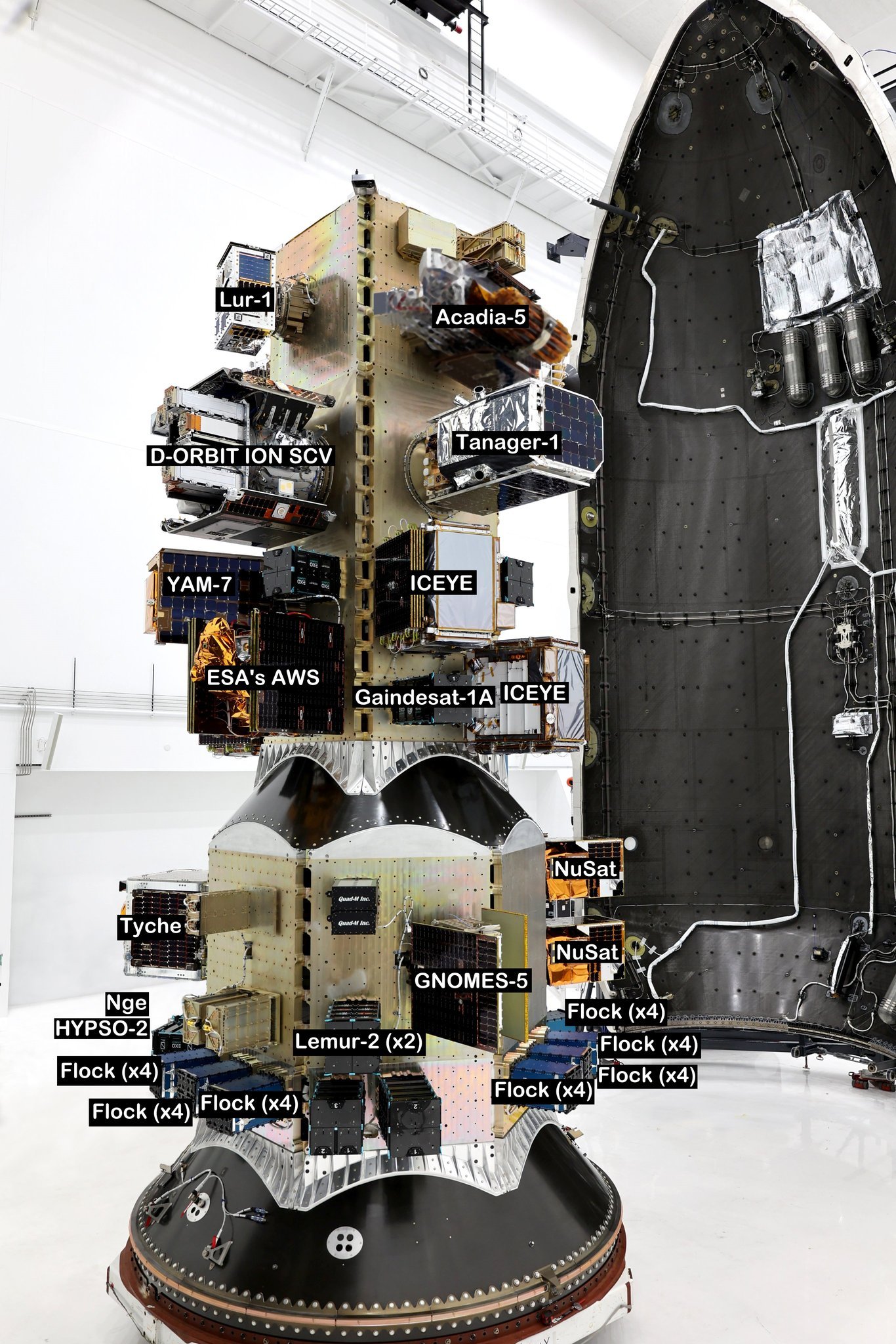
OreSat0.5’s mission includes testing an open-source ADCS designed for precise antenna and camera pointing on amateur radio satellites, and demonstrating the “DxWiFi” S-band 802.11b bidirectional radio system for high-speed (1 Mbps) communication. Additionally, it aims to provide openly published flight performance data, including power and thermal characteristics, to support the development of cost-effective, scalable satellite systems. Telemetry data from OreSat0.5 can be received on 436.500 MHz and decoded using 9600 baud GMSK with DK3WN’s GetKISS+ v.1.4.2 software. The telemetry dashboard is viewable on the SatNOGS website: https://db.satnogs.org/satellite/DKCD-1609-0567-7056-3922.
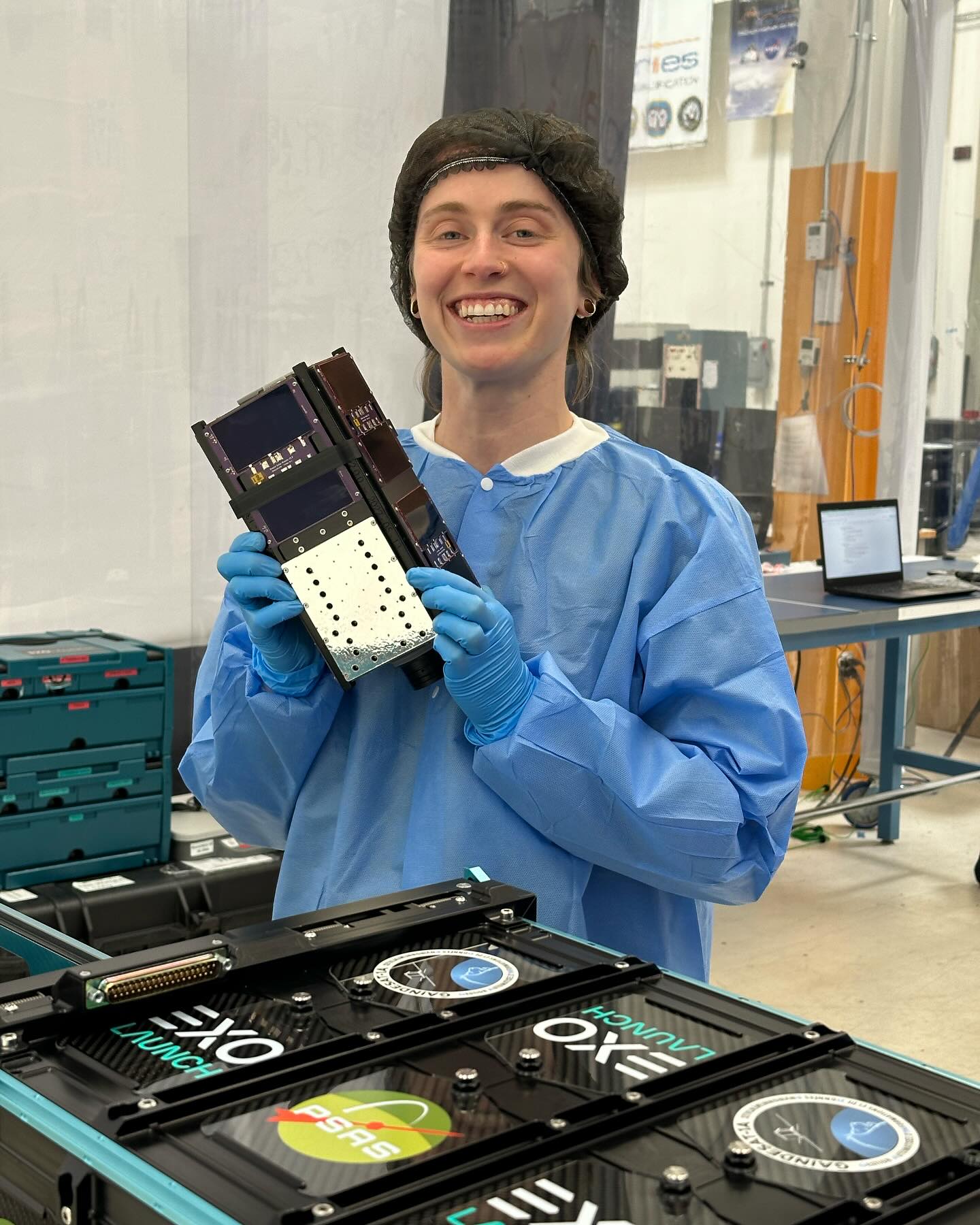
The mission also marked a significant achievement for Exolaunch, the satellite deployment company responsible for integrating 42 of the 116 satellites on the Transporter-11 mission. This launch was Exolaunch’s 30th successful integration, representing more than two dozen companies. Exolaunch CEO Robert Sproles expressed gratitude to their customers and SpaceX, emphasizing the importance of collaboration and innovation in the success of these missions.
[ANS thanks Will Robinson-Smith, Spaceflight Now, and the Portland State Aerospace Society, for the above information]
The 2024 AMSAT President’s Club coins are here now!
Help Support GOLF and Fox Plus
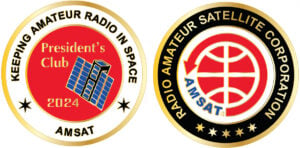 Join the AMSAT President’s Club today and help
Join the AMSAT President’s Club today and help
Keep Amateur Radio in Space!
https://www.amsat.org/join-the-amsat-presidents-club/
Polaris Dawn Set for Historic Launch and First Commercial Spacewalk
The private astronaut mission Polaris Dawn is poised for launch on August 27, 2024, with a groundbreaking objective: the first commercial spacewalk. The four-member crew, consisting of Anna Menon, Scott Poteet, Jared Isaacman, and Sarah Gillis, arrived at the Kennedy Space Center on August 19 to finalize preparations. This mission, the first of the Polaris program, marks a significant step in commercial space exploration and is set to launch aboard a SpaceX Crew Dragon atop a Falcon 9 rocket from Launch Complex 39A.
Scheduled to last five days, the Polaris Dawn mission will propel the Crew Dragon spacecraft to altitudes reaching 1,400 kilometers, the highest for a crewed mission since Apollo 17 in 1972. The mission’s objectives are multifaceted, including testing laser intersatellite links with SpaceX’s Starlink satellites and conducting 40 experiments. However, the highlight will be the spacewalk, a historic first for a private mission, and the first from a Crew Dragon spacecraft. The spacewalk will involve all four astronauts, with two emerging from the hatch in new SpaceX-developed extravehicular activity (EVA) suits for a brief yet pivotal two-hour spacewalk.
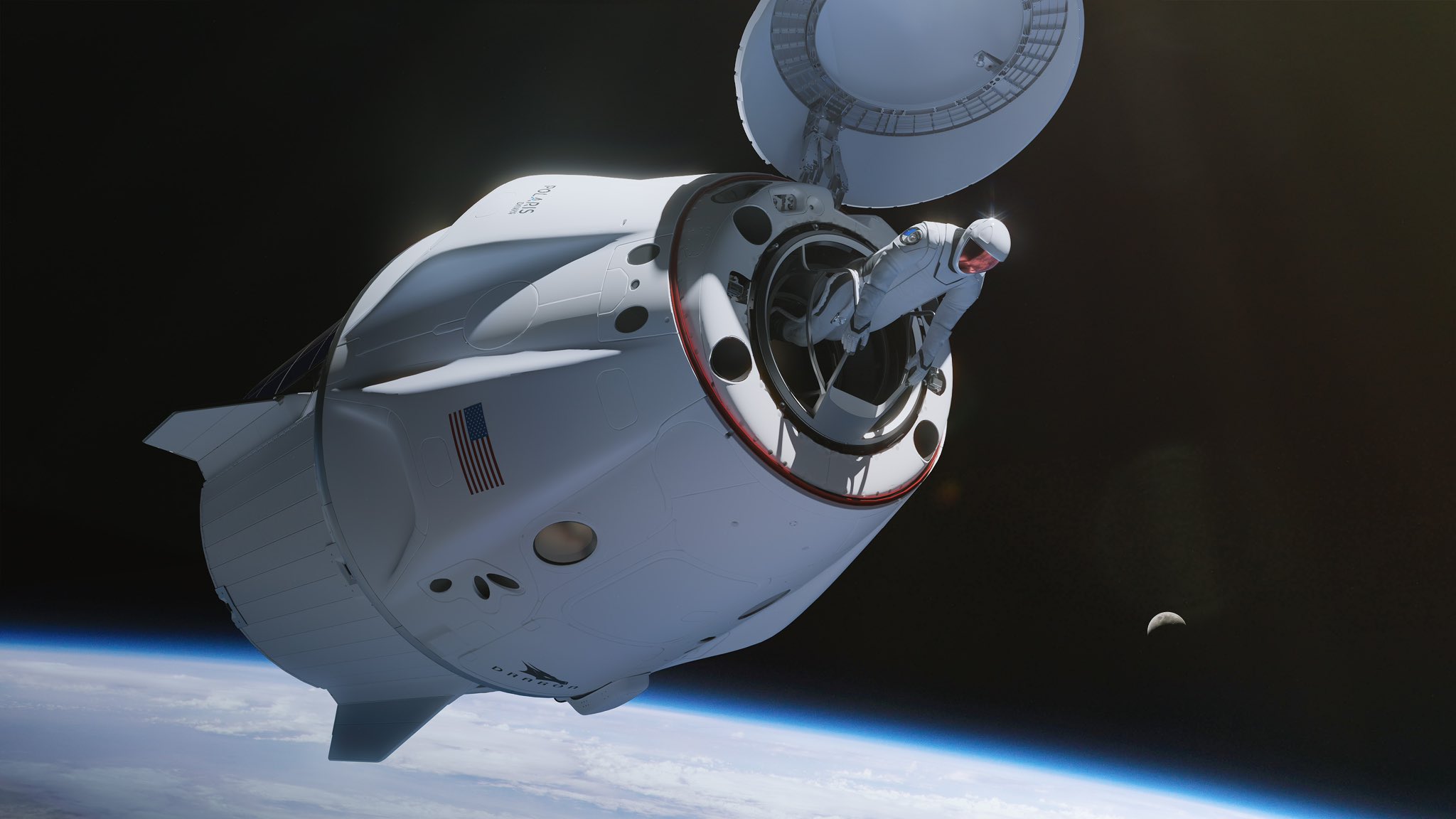
Jared Isaacman, the billionaire backing the Polaris program and commander of Polaris Dawn, emphasized the importance of the spacewalk during a press conference after arriving at KSC. “The idea is to learn as much as we possibly can about this suit and get it back to the engineers to inform future suit design evolutions,” Isaacman stated. The spacewalk is scheduled for flight day three, with preparations beginning shortly after launch. The crew will undergo a prebreathing protocol to adjust the cabin’s atmospheric pressure and increase oxygen levels, a process essential for the EVA.
SpaceX engineer Sarah Gillis, serving as a mission specialist, detailed the crew’s rigorous preparations. On flight day two, the astronauts will don the EVA suits for mobility tests inside the spacecraft. During the spacewalk, two astronauts, referred to as EV1 and EV2, will take turns exiting the spacecraft for approximately 15 to 20 minutes each. Isaacman noted that while the idea of a free-floating spacewalk was considered, the crew will instead perform a “hands-free” demonstration with their feet securely attached to the spacecraft’s mobility aids, underscoring the mission’s cautious approach.
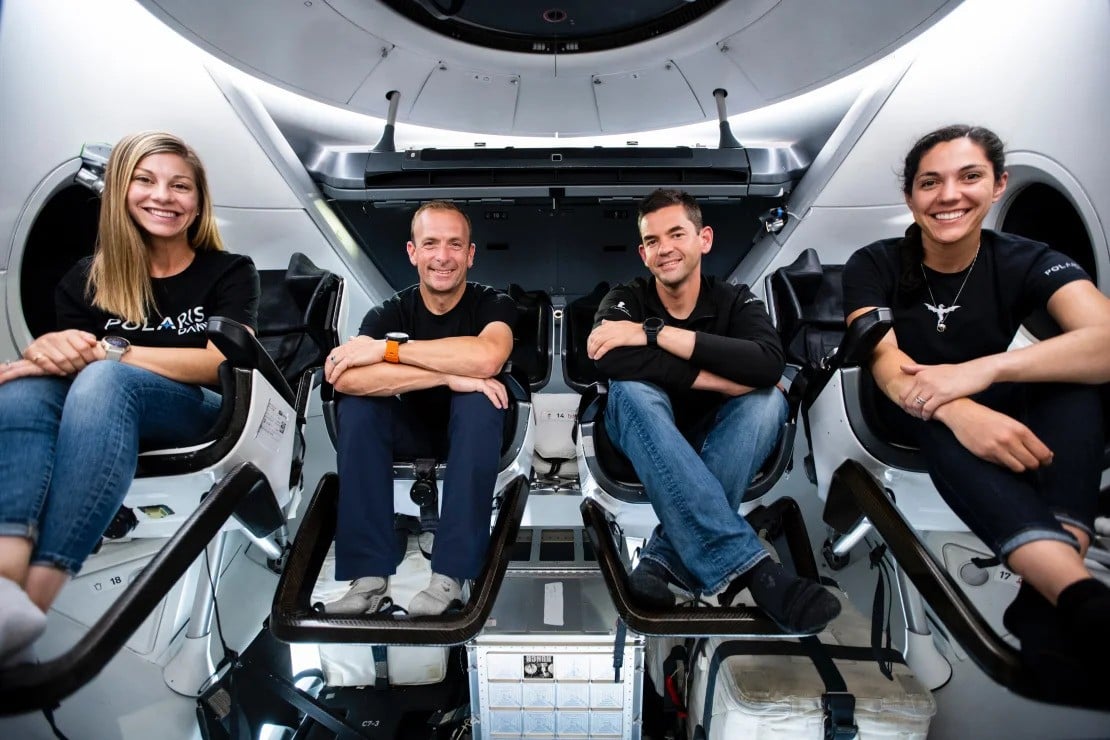
The mission’s development has been intensely focused on the spacewalk and the associated EVA suits. “The EVA probably makes up the majority of the development for Polaris Dawn,” Isaacman said, acknowledging the inherent risks. SpaceX vice president Bill Gerstenmaier, formerly of NASA, confirmed that extensive safety protocols have been implemented. He mentioned a recent issue where engineers identified and resolved a static electric discharge risk, ensuring the crew’s safety during the spacewalk.
Polaris Dawn’s mission profile includes a launch window between 3:38 and 7:38 a.m. Eastern on August 27, carefully chosen to minimize risks from micrometeoroids and orbital debris. After reaching an initial orbit, the spacecraft will ascend to 1,400 kilometers before lowering to 700 kilometers for the spacewalk. The mission will conclude with a demonstration of Starlink capabilities on flight day four, followed by reentry on day six. As the first of three planned missions under the Polaris program, Polaris Dawn represents a significant leap forward in commercial spaceflight, setting the stage for future endeavors, including a potential crewed Starship launch.
[ANS thanks Jeff Foust, SpaceNews for the above information]
GridMasterMap Satellite Top 100 Rovers September 2024 Rankings
The September 2024 rankings for the Top 100 Rovers (Mixed LEO/MEO/GEO) in satellite operations, as determined by @GridMasterMap on Twitter, has been released. The ranking is determined by the number of grids and DXCC entities activated, taking into account only those grids where a minimum number of QSOs logged on the gridmaster.fr website have been validated by a third party. Grid numbers do not directly reflect the exact number of activations. Satellite operators are encouraged to upload their LoTW satellite contacts to https://gridmaster.fr in order to provide more accurate data.
Updated: 2024-08-24
| 1 | ND9M | 26 | KG5CCI | 51 | JK2XXK | 76 | LU4JVE |
| 2 | NJ7H | 27 | N4AKV | 52 | AC0RA | 77 | AA8CH |
| 3 | JA9KRO | 28 | DL2GRC | 53 | SM3NRY | 78 | VE1VOX |
| 4 | N5UC | 29 | N5BO | 54 | EA4NF | 79 | FG8OJ |
| 5 | UT1FG | 30 | K8BL | 55 | BA1PK | 80 | PT9BM |
| 6 | OE3SEU | 31 | KE4AL | 56 | JL3RNZ | 81 | KJ7NDY |
| 7 | DL6AP | 32 | KB5FHK | 57 | AA5PK | 82 | KI7UXT |
| 8 | WI7P | 33 | VE3HLS | 58 | DF2ET | 83 | YU0W |
| 9 | DP0POL | 34 | KI0KB | 59 | KI7QEK | 84 | KB2YSI |
| 10 | K5ZM | 35 | KI7UNJ | 60 | SP5XSD | 85 | WA9JBQ |
| 11 | N6UA | 36 | LA9XGA | 61 | F4DXV | 86 | N6UTC |
| 12 | HA3FOK | 37 | F4BKV | 62 | AD7DB | 87 | N4DCW |
| 13 | WY7AA | 38 | PA3GAN | 63 | VE1CWJ | 88 | JM1CAX |
| 14 | N9IP | 39 | JO2ASQ | 64 | KE9AJ | 89 | VE3GOP |
| 15 | W5PFG | 40 | N7AGF | 65 | XE1ET | 90 | N0TEL |
| 16 | AK8CW | 41 | VK5DG | 66 | VA7LM | 91 | KG4AKV |
| 17 | AD0DX | 42 | XE3DX | 67 | N8RO | 92 | K6VHF |
| 18 | F5VMJ | 43 | KE0WPA | 68 | KM4LAO | 93 | K0FFY |
| 19 | WD9EWK | 44 | K7TAB | 69 | W8LR | 94 | CU2ZG |
| 20 | ND0C | 45 | KE0PBR | 70 | N4UFO | 95 | VE7PTN |
| 21 | AD0HJ | 46 | VA3VGR | 71 | W1AW | 96 | AF5CC |
| 22 | LU5ILA | 47 | PR8KW | 72 | DL4EA | 97 | VE6WK |
| 23 | DJ8MS | 48 | W7WGC | 73 | HB9GWJ | 98 | W8MTB |
| 24 | KX9X | 49 | N6DNM | 74 | PT2AP | 99 | DK9JC |
| 25 | ON4AUC | 50 | EB1AO | 75 | M1DDD | 100 | PT9ST |
[ANS thanks @GridMasterMap for the above information]
Need new satellite antennas?
Purchase an M2 LEO-Pack from the AMSAT Store! When you purchase through AMSAT, a portion of the proceeds goes towards
When you purchase through AMSAT, a portion of the proceeds goes towards
Keeping Amateur Radio in Space.
https://amsat.org/product-category/hardware/
Changes to AMSAT-NA TLE Distribution for August 23, 2024
Two Line Elements or TLEs, often referred to as Keplerian elements or keps in the amateur community, are the inputs to the SGP4 standard mathematical model of spacecraft orbits used by most amateur tracking programs. Weekly updates are completely adequate for most amateur satellites. TLE bulletin files are updated daily in the first hour of the UTC day. New bulletin files will be posted immediately after reliable elements become available for new amateur satellites. More information may be found at https://www.amsat.org/keplerian-elements-resources/.
This week there are no additions or deletions to the AMSAT TLE distribution.
[ANS thanks AMSAT Orbital Elements page for the above information]
ARISS NEWS
Amateurs and others around the world may listen in on contacts between amateurs operating in schools and allowing students to interact with astronauts and cosmonauts aboard the International Space Station. The downlink frequency on which to listen is 145.800 MHz worldwide.
+ Recently Completed Contacts
Bayou Academy, Cleveland, MS, direct via W5YD
The ISS callsign was NA1SS
The scheduled crewmember was Sunita Williams KD5PLB
The ARISS mentor was K4RGK
Contact was successful: Thu 2024-08-22 16:43:06 UTC
Watch the livestream at https://www.youtube.com/live/PzZuhb1bGiw
Gymnasium der Stadt Meschede, Meschede, Germany, direct via DRØZ
The ISS callsign was OR4ISS
The scheduled crewmember was Sunita Williams KD5PLB
The ARISS mentor was IN3GHZ
Contact was successful: Fri 2024-08-23 08:05:04 UTC
Watch the livestream at https://www.instagram.com/gds_meschede/
+ Upcoming Contacts
Fasta Villa Eucaristica School, Cordoba City, Argentina, direct via LU1HKO
The ISS callsign is presently scheduled to be NA1SS
The scheduled crewmember is Matthew Dominick KCØTOR
The ARISS mentor is VE6JBJ
Contact is go for: Fri 2024-08-30 15:29:39 UTC
The crossband repeater continues to be active (145.990 MHz up {PL 67} & 437.800 MHz down). If any crewmember is so inclined, all they have to do is pick up the microphone, raise the volume up, and talk on the crossband repeater. So give a listen, you just never know.
The packet system is also active (145.825 MHz up & down).
As always, if there is an EVA, a docking, or an undocking; the ARISS radios are turned off as part of the safety protocol.
Note, all times are approximate. It is recommended that you do your own orbital prediction or start listening about 10 minutes before the listed time.
The latest information on the operation mode can be found at https://www.ariss.org/current-status-of-iss-stations.html
The latest list of frequencies in use can be found at https://www.ariss.org/contact-the-iss.html
[ANS thanks Charlie Sufana, AJ9N, one of the ARISS operation team mentors for the above information]
Upcoming Satellite Operations
Posted August 20th by @KB5FHK_Tom on X (formerly Twitter): I will be heading home to MS on Labor Day weekend. My main focus is EM41. I already posted a couple of passes on hams.at.
Philippe, EA4NF will be QRV (as KE4NF) from EL95 25-27 Aug. Looks like this will be FM LEO only. Log as KE4NF.
A growing number of satellite rovers are currently engaged in sharing their grid square activations on https://hams.at. By visiting the website, you gain easy access to comprehensive information about the operators responsible for activating specific grid squares. Additionally, you have the ability to assess the match score between yourself and a particular rover for a given pass, while also being able to identify the upcoming satellite passes that are accessible from your location.
[ANS thanks Ian Parsons, K5ZM, AMSAT rover page manager, for the above information]
AMSAT Ambassador Activities
AMSAT Ambassadors provide presentations, demonstrate communicating through amateur satellites, and host information tables at club meetings, hamfests, conventions, maker faires, and other events.
AMSAT Ambassador Clint Bradford, K6LCS, says,
South Africa called – and was answered! I’ll be presenting “How to Work
the FM Satellites with Your HT” show to a great group next month. Their
“ARRL” is the South African Radio League … and I am looking forward
to meeting these fine hams.
Think such a lively and informative 75-minute presentation on would be
appropriate for YOUR event or club? Just let us know!
Clint Bradford K6LCS
[email protected]
909-999-SATS (7287)
Northeast HamXpostion – August 22nd thru 25th, 2024
Best Western Royal Plaza Hotel & Trade Center
181 Boston Post Road West
Marlborough, MA 01752
https://hamxposition.org/
Greater Louisville Hamfest – September 7th, 2024
Paroquet Springs Conference Centre
395 Paroquet Springs Drive
Shepherdsville, KY 40165
https://louisvillehamfest.wixsite.com/louisvillehamfest
AMSAT Forum and Information Table / W4FCL
North Star Radio Convention – October 5th, 2024
Hennepin Technical College (North Campus)
9000 Brooklyn Boulevard
Brooklyn Park, MN 55445
https://conv2023.tcfmc.org/
AMSAT Forum and Information Table / KØJM and ADØHJ
Central Kentucky Hamfest – October 5th, 2024
Highlands Baptist Church
2032 Parallel Road
Lexington, KY 40502
https://www.facebook.com/w9khz/
AMSAT and Educational Satellites Forum and Information Table / AI4SR and W4FCL
Radio Society of Tucson – October 5th, 2024
Calvary Tucson Church
8711 East Speedway Boulevard
Tucson AZ 85710
https://k7rst.club/2024/07/tucson-autumn-ham-fest-2024/
N1UW
Pacificon 2024, ARRL Pacific Division Conference – October 18th thru 20th, 2024
San Ramon Marriott
2600 Bishop Drive
San Ramon, CA 94583
https://www.pacificon.org/
WU0I
2024 AMSAT Space Symposium and Annual General Meeting – October 25th thru 27th, 2024
Doubletree by Hilton Tampa Rocky Point Waterfront
3050 N Rocky Point Drive West
Tampa, FL 33607
https://www.amsat.org/
Stone Mountain Hamfest, ARRL State Convention – November 2nd and 3rd, 2024
Gwinnett County Fairgrounds
2405 Sugarloaf Parkway
Lawrenceville, GA 30042
https://stonemountainhamfest.com/
Oro Valley Amateur Radio Club – November 9th, 2024
Marana Middle School
11285 West Grier Road
Marana, AZ 85653
https://www.tucsonhamradio.org/copy-of-hamfest-2022
N1UW
Yuma HAMCON – February 20th thru 22nd, 2025
Yuma, AZ
N1UW
[ANS thanks Bo Lowrey, W4FCL, Director – AMSAT Ambassador Program, for the above information]
Want to fly the colors on your own grid expedition?
Get an AMSAT car flag and other neat stuff from our Zazzle store!
25% of the purchase price of each product goes towards Keeping Amateur Radio in Space
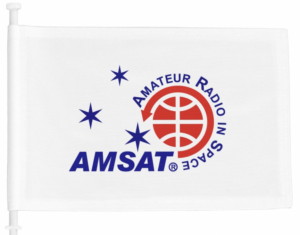 Keeping Amateur Radio in Space
Keeping Amateur Radio in Space
https://www.zazzle.com/amsat_gear
Satellite Shorts From All Over
+ Russia successfully launched its 89th Progress cargo spacecraft, Progress MS-28, to the International Space Station (ISS) on August 15, 2024. The uncrewed spacecraft lifted off from the Baikonur Cosmodrome in Kazakhstan aboard a Soyuz rocket at 0320 UTC. Carrying nearly three tons of food, scientific equipment, and other supplies, the spacecraft autonomously docked with the ISS on August 17 at 0553 UTC, connecting to the rear port of the Zvezda service module. This docking occurred just days after the previous cargo spacecraft, Progress MS-26, was deorbited on August 12 following its six-month mission. With its arrival, Progress MS-28 joined two other freighters, including Cygnus NG-21, and three crewed spacecraft already at the ISS. The successful mission continues Russia’s long-standing contribution to ISS resupply operations. (ANS thanks Mike Wall, Space.com, for the above information)
+ The European Space Agency’s Jupiter Icy Moons Explorer (Juice) mission is making headlines with its dual gravity assist maneuver this week. After a successful flyby of the moon on August 19, 2024, Juice passed Earth on August 20, 2024, marking the first-ever lunar-Earth double flyby. This maneuver uses Earth’s gravity to adjust Juice’s trajectory, setting it up for a flyby of Venus in August 2025 and ultimately aiming for Jupiter’s orbit by July 2031. The spacecraft’s two cameras are capturing and sending images back to Earth, while mission operators are closely monitoring the high-risk maneuver to ensure precision. With Jupiter being nearly 500 million miles away, this gravity assist strategy allows Juice to conserve fuel and carry a variety of scientific instruments. The mission’s success relies on careful navigation and timing, as any deviation could jeopardize its ambitious goals. (ANS thanks Ashley Strickland, CNN, for the above information).
+ Space is hard: NASA’s BurstCube, which deployed from the ISS in April, is a 6U CubeSat that detects gamma rays from short gamma-ray bursts, likely caused by neutron star collisions. BurstSat, unfortunately, lost one of its magnetorquers during commissioning, along with one solar panel that did not fully deploy. The team has been able to continue the satellite’s mission by compensating for the malfunctioning equipment through the use of a Sun-pointing configuration. But due to these failures, the mission will likely reenter sooner than expected, around the end of 2024. [Before complaining about the failure of your favorite HamSat, consider that even NASA has issues!] (ANS thanks The Orbital Index for the above information.)
+ The FCC has granted SpaceX permission to upgrade its first-generation Starlink satellites with second-generation technology, aiming to enhance broadband quality for its users. This upgrade is expected to improve service, especially in polar regions, by using advanced beam-forming and digital processing technologies. SpaceX initially launched first-generation satellites in 2019 and applied in 2023 to integrate the new technology. Despite pushback from Dish Network over potential interference issues, the FCC dismissed these concerns, supporting SpaceX’s plans to optimize spectrum use and increase network capacity. SpaceX will replace the older satellites with upgraded ones as they reach the end of their operational period, rather than de-orbiting them rapidly. The overall goal is to provide more robust service to underserved areas across the country. (ANS thanks Michael Kan, PCMag, for the above information).
Join AMSAT today at https://launch.amsat.org/
In addition to regular membership, AMSAT offers membership to:
* Societies (a recognized group, clubs or organization).
* Primary and secondary school students are eligible for membership at one-half the standard yearly rate.
* Post-secondary school students enrolled in at least half-time status shall be eligible for the student rate for a maximum of 6 post-secondary years in this status.
* Memberships are available for annual and lifetime terms.
Contact info [at] amsat.org for additional membership information.
73 and remember to help Keep Amateur Radio in Space!
This week’s ANS Editor, Mitch Ahrenstorff, ADØHJ
ad0hj [at] amsat.org

